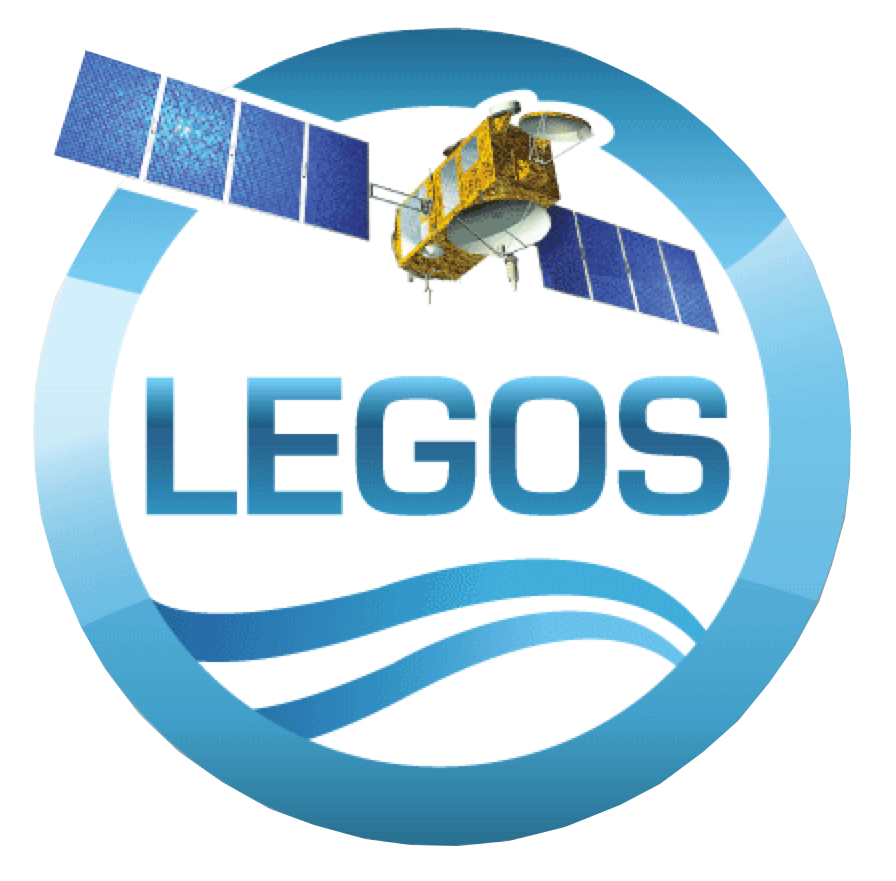Project Partners
All team members from LEGOS, FMI, UCL, UoL, UiT, and AWI are actively involved in research projects producing, validating or using radar and laser altimetry data products from a wide variety of datasets.
Together they provide a great breadth of knowledge and expertise that will be exploited during this project. The team has an established track record of publishing work on sea ice and snow in high profile scientific journals. Overall the consortium members are very committed to working together.
Partner Roles

Key Personnel from UCL-CPOM are:
- Dr Michel Tsamados: Scientific Lead for this project and project management: Michel is a member of CPOM and a lecturer at UCL. He has worked on the development of sea-ice models to include anisotropic rheology, form drag parameterisation and summer melt processes, and on the production of various remote sensing data products including ocean surface currents, sea ice drift, sea ice surface topography, and snow on sea ice. He is involved (as lead scientist or CoI) on several European Space Agency projects including the Arctic+ snow and Arctic+ sea ice. Michel is CoI on the Ka/Ku MOSAiC project and was onboard Fedorov as part of Leg 1a of the MOSAiC campaign.
Additional CPOM personnel at UCL who provide expertise on this project (although in a non-key capacity) include:
- Prof. Julienne Strove: a very experienced sea ice scientist who will act in an advisory capacity and reviewer.
- Dr. Andy Ridout: a very experienced scientist and programmer who will provide technical support for all stages of the project. Produced the prototype algorithm at the origin of the multi-frequency approach proposed in this project.
- Dr. Rosie Willatt: Rosie has extensive expertise on Ka/Ku radar penetration having taken part in the early CryoVex campaigns of CryoSat and written her thesis on “Observations of Radar Penetration into Snow on Sea Ice”. She is currently the named PDRA on the Ka/Ku MOSAiC project.
- Dr. Thomas Newman: Thomas is a snow radar expert having developed one of the most accurate snow thickness retrieval algorithms for the snow radar onboard OIB. He is currently a PDRA at UCL working on the ESA candidate satellite mission HARMONY.
- Robbie Mallett: Robbie is a PhD student studying snow on sea ice. He has published on the delayed propagation of the radar into the snow pack and has recently merged the 1D snow model SNOWPACK with the radiative transfer model SMRT.
Key Personnel from UCL-MSSL are:
- Prof. Steven Baker: Steven is a Radar Altimetry expert with 26 years’ experience working on ESA RA missions. He is an experienced software engineer and manager of both software engineering and Earth remote sensing projects. Steven has managed teams in a number of successful projects for ESA. Steven was deeply involved in the specification and prototyping of L2 Ice processing for CryoSat SIRAL and Sentinel-3 SRAL as well as the software instrument simulators for CryoSat and Sentinel-6.
- Alan Muir: Alan is an expert in software engineering, radar altimetry of the cryosphere, systems and web portal management. He has 20 years’ experience of involvement in all aspects of software engineering projects related to radar altimetry and polar remote sensing. He is currently the lead engineer on the Sentinel-3 Mission Performance Centre’s ESL, responsible for commissioning and developing.

Key Personnel from LEGOS are:
- Dr Sara Fleury: Dr Sara Fleury leads the altimetric database of the CTOH, a French National Service of Observation at the destination of the internal community. She has published several major articles on satellite radar altimeters and sea ice thickness retrieval and participate to the User Requirement Document for ESA and for CNES future altimetric missions. She is expert within several committees related to satellite altimetry and sea ice observation: commissioning for Saral, Jason-3 and Sentinel-3, CNES PEACHI sea-ice project, ESA Envisat and CryoSat-2 Quality Working Groups (QWG), ESA/EUMETSAT Sentinel-3 S3VT, expert member of CRISTAL High Priority Copernicus Mission Advisory Group (MAG). Dr Sara Fleury leads the altimetric database of the CTOH, a French National Service of Observation at the destination of the internal community. She has published several major articles on satellite radar altimeters and sea ice thickness retrieval and participate to the User Requirement Document for ESA and for CNES future altimetric missions. She is expert within several committees related to satellite altimetry and sea ice observation: commissioning for Saral, Jason-3 and Sentinel-3, CNES PEACHI sea-ice project, ESA Envisat and CryoSat- 2 Quality Working Groups (QWG), ESA/EUMETSAT Sentinel-3 S3V.
- Dr Florent Garnier: Dr Florent Garnier is a research Engineer at the LEGOS laboratory since 2018. He is responsible for the development and the validation of the sea ice thickness and snow depth altimetric products. In addition, he is actually working on the production of sea ice products in the southern hemisphere. He has been involved in several polar projects such as the CNES alti-Glacio project, the ESA CryoSeaNice project and the ESA cryosat+ Antarctica project.

Key Personnel from the Arctic University of Norway (UiT) are:
-
Dr Jack Landy:
Centre for Integrated Remote Sensing and Forecasting for Arctic Operations (CIRFA). He is additionally employed as Lecturer in Geodesy at the University of Bristol, UK, within the Bristol Glaciology Centre (BGC) of the School of Geographical Sciences. He has almost ten years of experience participating in a variety of Arctic sea ice projects studying the mass balance, surface roughness and electromagnetic modelling of wave scattering by Arctic sea ice. He has led the development of a physical retracking solution for CryoSat-2 radar altimetry observations (Landy et al., In Review), based on novel numerical simulations for the delay-Doppler SAR echo waveform from snow-c0vered sea ice (Landy et al., 2019). He has worked on laser and radar altimetry projects for over 6 years, developing long- term consistent sea ice thickness records from multi-mission altimetry (Landy et al., 2017) and pan-Arctic sea ice surface roughness data products (Landy et al., 2015). He is currently a Fellow of the European Space Agency, leading the project Arctic-SummIT (ESA/4000125582/18/INS) to develop a proof-of-concept for measuring sea ice thickness from Cryosat-2 radar altimetry in summer. He is Co-Principal Investigator on the UK research project PRE-MELT (Preconditioning the trigger for rapid Arctic ice melt; NERC:NE/T000546/1) to employ measurements of sea ice properties during spring and summer months for understanding dynamic sea ice breakup in the Central Arctic Ocean. He is additionally Co-I on the UK-Germany collaborative Changing Arctic Ocean grant Diatom-ARCTIC (NERC-BMBF:NE/R012849/1) to model species-level sea ice algae phenology in the Arctic.
Additional UiT personnel who provide expertise on this project (although in a non-key capacity) include
-
Claude De Rijke-Thomas: Claude De Rijke-Thomas (BGC-UoB) is a Ph.D. student at the University of Bristol, UK, within the Bristol Glaciology Centre in the School of Geographical Sciences. He is directly supervised by Jack Landy. He completed an M.Sc. by Research in the Department of Physics at UCL, UK, in 2019 titled: Deep Learning for Radar Altimetry Echo Classification and Sea Ice Surface Recognition, focusing on the development of machine learning algorithms for classifying and retrieving physical parameters from CryoSat-2 observations. He is currently working on his Ph.D. project, titled: Snow Blanket: Exploring the critical role of snow on Arctic sea ice for new state- of-the-art NASA & ESA satellite missions. The focus of the project is on improving approaches for monitoring snow properties from spaceborne and airborne multi- frequency altimetry, through numerical modelling of radar echoes and algorithm development, so is directly relevant for this proposal.

Key Personnel from the Alfred Wegener Institute (AWI) are:
-
Prof Christian Haas: Christian Haas is a Helmholtz Professor for Arctic and Antarctic Sea Ice Geophysics at the University Bremen and the head of the AWI sea ice physics section. His scientific field of expertise includes in-situ, airborne and remote sensing methods with respect to the geophysics of sea ice. He led several ESA projects such as CryoVal sea ice and the Arctic+ ice mass project and was involved in numerous
Snow on sea ice
Reference : UCL_PRO_2020_1_MT Version : 1 page5 Date : 24.1.2020
others. He has been involved as a scientific advisor for remote sensing missions including CryoSat-2 and reviewer of the NASA Operation IceBridge airborne program. Christian Haas has headed multiple airborne sea ice surveys as principal investigator since the beginning of the ESA CryoVEx program. As cruise leader on leg 2 he is strongly involved in the scientific implementation of the sea ice program on MOSAiC.
-
Dr. Stefan Hendricks: Stefan Hendricks is a senior scientist in the sea ice physics section of AWI. He is specialized on remote sensing of sea-ice thickness with satellite altimetry and airborne geophysics. He is leading the production of the sea-ice thickness climate data records for the ESA Climate Change Initiative on Sea Ice and the Copernicus Climate Change Services. He is also principal investigator of the IceBird Winter airborne field campaigns and the MOSAiC transect task that includes measuring the changes of snow depth during the yearlong drift experiment. Before he has been part of the Arctic+ ice mass project in has been responsible for intercomparing different ice thickness data sets.

Key Personnel from the Finnish Meteorological Institute are:
-
Dr. Eero Rinne: Eero Rinne is the head of the Polar oceanography and sea ice group at Finnish Meteorological Institute. He has been been working with satellite remote sensing of cryosphere for almost two decades and has a track record of leadership at WP and science lead level in ESA and EU H2020 projects. His main research interest is creating novel cryospheric applications for existing remote sensing instruments. Among his management duties he is currently responsible for the sea ice thickness products of the ESA CCI+ Sea Ice project. He has also been and is leading WP’s in large EU projects, such as the H2020 SPICES and KOLARCTIC ICEOPS. Dr. Rinne has taught on two ESA training courses on remote sensing of the cryosphere 2016 and 2018. He is also a member of the mission advisory group for the Copernicus high priority candidate mission CRISTAL.
-
Ms. Heidi Sallila: Heidi Sallila is PhD. Student pursuing her degree in geophysics. She has worked on altimeter sea ice thickness retrieval in the polar oceanography and sea ice group at the FMI since 2014. She has participated in several ESA and EU H2020 projects during this time. She received her Master of Science degree in geoinformatics from the Aalto University School of Engineering in 2016, and is now continuing with PhD studies on sea ice in Helsinki University. Her current work includes maintaining sea ice thickness related products and research work in ESA CCI+ sea ice. She has participated in the impact assessment for ESA Arctic+ Sea Ice and Snow on Sea Ice projects.

Key Personnel from University of Leeds are:
-
Prof Andrew Shepherd: Professor Shepherd combines his role of Director of Shepherd Space with that of Director of the NERC Centre for Polar Observation and Modelling at the University of Leeds. He is also the Principal Scientific Advisor to the European Space Agency CryoSat-2 satellite mission, and a member of NERC Science Board. Professor Shepherd was a contributing author of the Fourth Assessment Report of the Intergovernmental Panel on Climate Change, and founded and led the ESA-NASA Ice Sheet Mass Balance Inter-comparison Exercise – the first community assessment of ice loss from Antarctica and Greenland and the consequent sea level contribution. Professor Shepherd’s field of expertise is satellite remote sensing of the cryosphere,with a particular emphasis on the quantitative techniques of radar interferometry and radar altimetry. He has also worked on studies of land degradation using satellite infrared radiometry and models of atmospheric radiative transfer, and has led satellite validation campaigns in Europe, Africa, and Antarctica. He is currently involved in 11 active research grants, including the NERC Ice Sheet Stability.
-
Dr Isobel Lawrence: Isobel Lawrence has recently been appointed as sea ice EO scientist for CPOM at the University of Leeds. Isobel is a specialist in using multi- satellite synergies for sea ice, snow, and polar ocean observations. She was lead author on the Dual-altimeter snow thickness (DuST) publication which accompanied the ESA Arctic+ project, and more recently has developed processors for the estimation of sea ice thickness from the Sentinel-3 satellite constellation.
Non-directly ESA funded project partners who will provide targeted expertise and datasets include Nathan Kurtz, Alek Petty and Rachel Tilling (NASA Goddard), Petteri Uotila (University of Helsinki), Daniel Feltham and David Schroeder (University of Reading), Shimming Xu and Lu Zhou (Tsinghua University).
 Key Personnel from UCL-CPOM are:
Key Personnel from UCL-CPOM are: Key Personnel from LEGOS are:
Key Personnel from LEGOS are:
 Key Personnel from the Arctic University of Norway (UiT) are:
Key Personnel from the Arctic University of Norway (UiT) are:
 Key Personnel from the Alfred Wegener Institute (AWI) are:
Key Personnel from the Alfred Wegener Institute (AWI) are:
 Key Personnel from the Finnish Meteorological Institute are:
Key Personnel from the Finnish Meteorological Institute are:
 Key Personnel from University of Leeds are:
Key Personnel from University of Leeds are:

